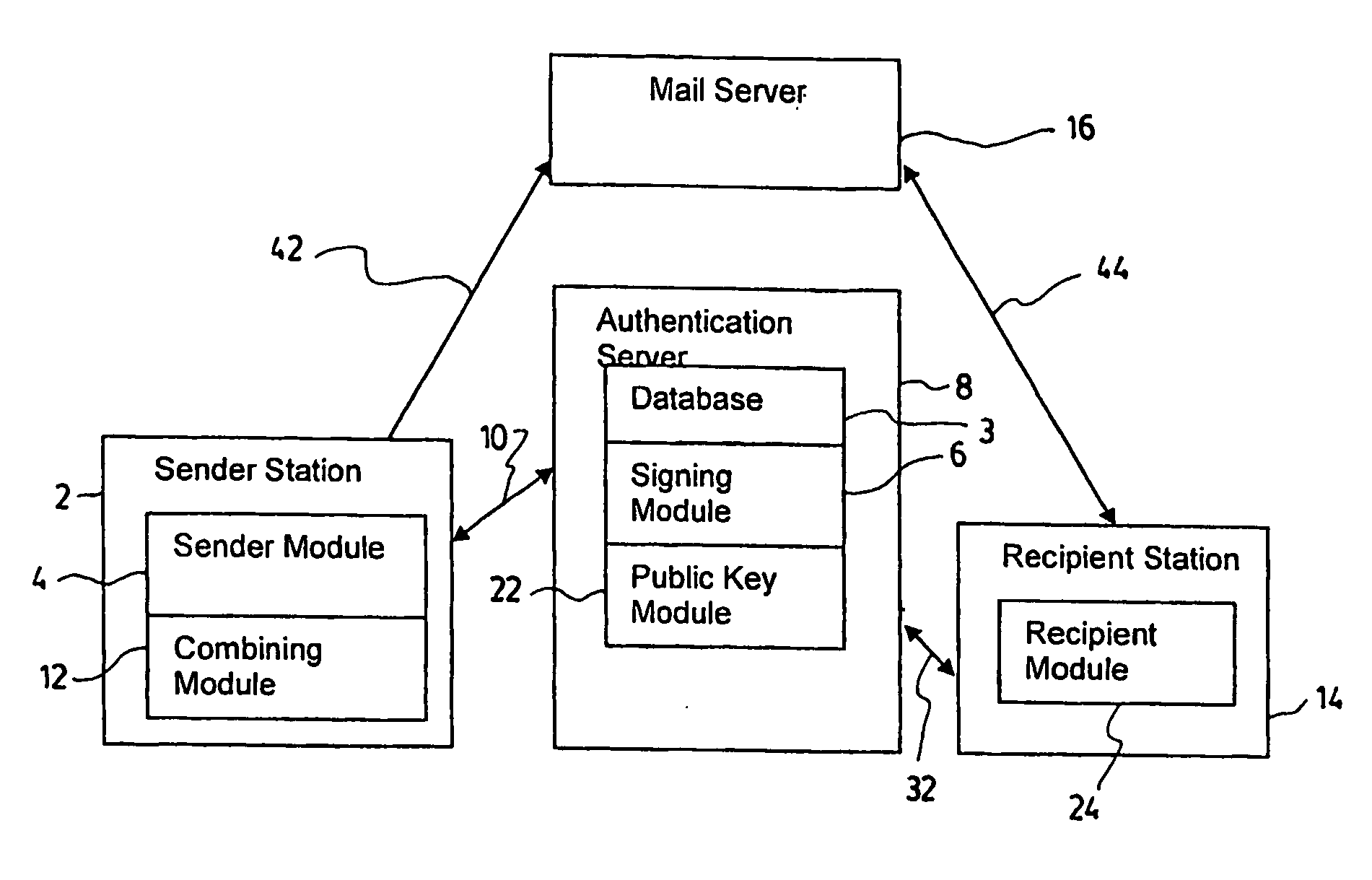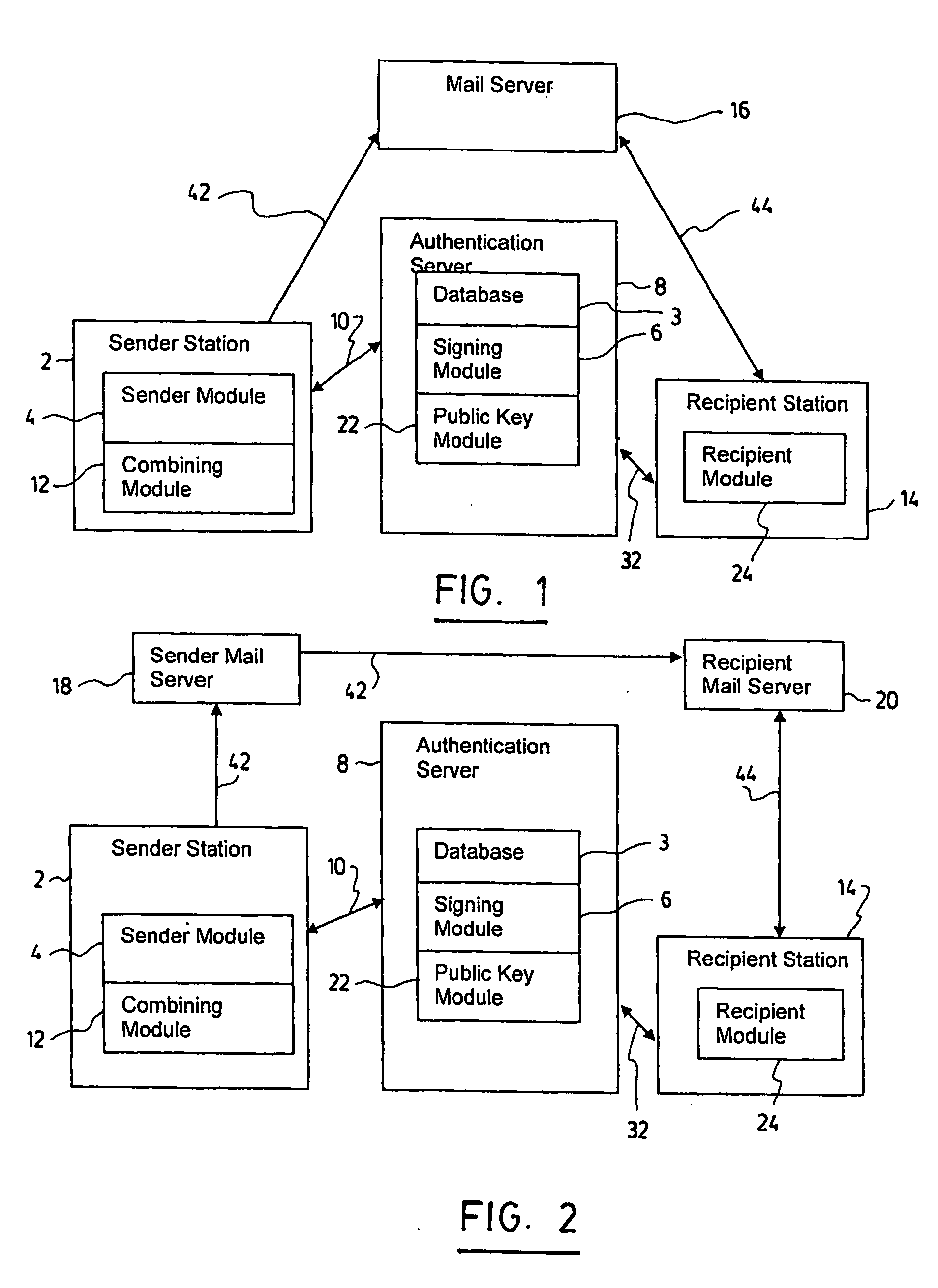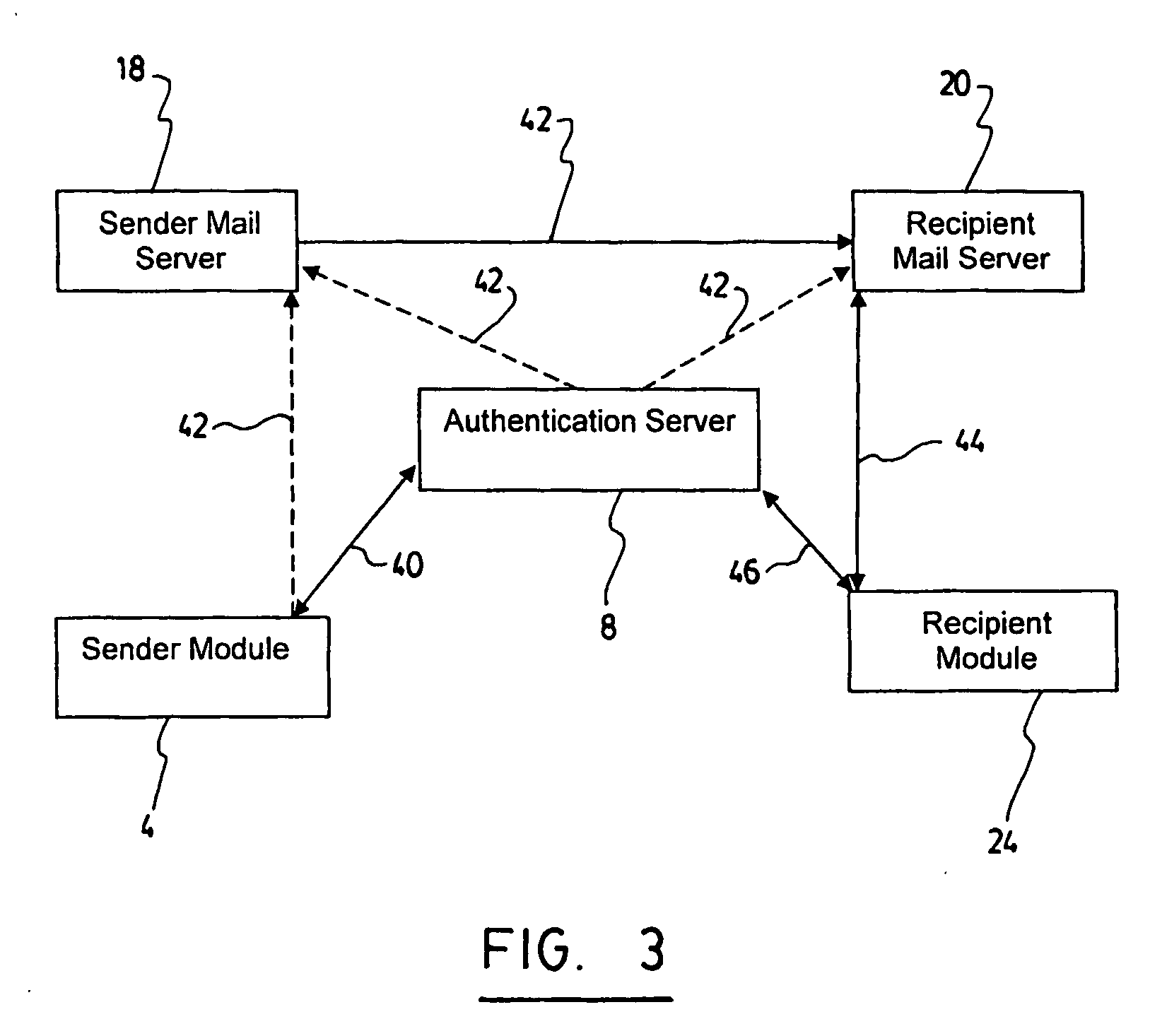These same advantages, however, have become a problem for email users all around the world because they are being abused by what is commonly referred to as “spammers” to send a very large amount of unsolicited illegitimate email at virtually no cost to the sender.
While such techniques can be useful on the short-term, they are impractical for long-term email exchanges because they lead to an arms-race with spammers and often result in either false-positives (legitimate email being dropped) or false-negatives (illegitimate email being accepted.)
The challenge is made to be difficult to respond to for automated responders, but easy to respond to for a human.
While this
system may indeed result in less spam in the recipient's inbox, it puts a burden on the sender which is considered by many to be counter-intuitive.
This solution has therefore not been widely adopted.
The problem with existing implementations of this scheme is that they require far too much understanding of cryptographic mechanisms on the part of the recipient and the sender.
In addition, there have not yet been any proposed solutions to provide a scalable cryptographic identity exchange mechanism.
This solution has therefore not been widely adopted.
Apart from
scalability issues, the main problem with this scheme is that it assumes that recipients will act in good faith, which cannot be guaranteed.
This solution has therefore not been widely adopted.
Instead of money, a stamp may also require some CPU-intensive computation instead, or some other operation requiring some effort on the part of the sender.
Either way, this scheme makes it easy for senders who send few emails, but makes it very costly for those sending spam.
The problem with this scheme is that it requires substantial changes to existing infrastructures in order to either collect money or verify the CPU computation.
This solution has therefore not been widely adopted.
Such schemes, and their variations, require changing a substantial number of email servers around the world and are therefore impractical.
This solution has therefore not been widely adopted.
The problem with this scheme is that it assumes that the number of offenders is rather small or located in a geographic location where the law permits such prosecution.
In practice, however, these assumptions do not hold, and such signatures have in fact now become an almost sure sign of spam.
This solution has therefore not been widely adopted.
However, none has yet succeeded in providing a viable solution to spam.
While DEL MONTE is correct in claiming that a radical modification to the existing email system to solve the spam problem is unwieldy or impossible and provides examples of existing solutions that fail in this regard, his proposed solution is itself subject to a number of limitations and problems.
First, by placing the authenticating server between the network from which the email is received and the original SMTP server,
network management is made more difficult for the administrators taking care of this infrastructure as any awkward symptoms of the SMTP server's behaviour will require analysis of the authenticating server's behaviour and its interaction with the rest of the network components.
Furthermore, authentication policies applied at the authenticating server are akin to “whitelisting”, which consist of a user establishing a
list of users from which they are willing to accept emails from, and are known to be impractical because of the problems faced by senders to contact recipient which have yet to place them in their “
whitelist”.
It should also be mentioned that “whitelisting” is a technique that is often easily circumvented given that there is often no way to verify whether the fields in the email headers have been forged or not.
Even if it were accepted, for the purpose of argument, that patents pertaining to physical mail may be applied to email, it remains that the process described by this
patent application may not be effective to solve the spam problem (it should be noted that NORRIS et al. do not attempt to solve the physical junk mail issue, as is discussed below).
As is argued in DEL MONTE, modifications to existing email network infrastructure is highly problematic because of the number of existing email servers and impractical because of the work required by system administrators to manage such a major change to their existing infrastructure.
Not to mention that the problem this method attempts to solve is that of physical mail senders sending packages which may be dangerous to recipients; specifically in reaction to the 2001 Anthrax letters incidents.
It does not attempt to address the issue of preventing senders from sending unwanted or junk physical mail.
Though the issue of digitally signing emails is discussed, this method does not attempt nor does it claim to help solve the spam problem.
Even if it were used for that purpose, it would suffer from the same problems that other spam solutions where the outgoing mail server is modified suffer from.
Mainly such solutions are unlikely to be widely adopted given the existing number of mail servers and the work that may be required by system administrators through the world to change all the mail servers they manage.
One drawback with this proposed solution is that the concept of public / private key may not be as widespread or as intuitive to understand as, say, that of a username and a
password.
The solution proposed by LOGAN et al. therefore poses an adoption problem that hinges on the ability of its promoters to educate the majority of
computer users as to the
mechanics and the responsibilities involved in using a public / private key infrastructure.
Also, the CA signs sender's keys only once at sign-up, and there is therefore no run-time
verification possible by the CA as to the type and quantity of emails being sent by the sender.
In addition, there is no way for the CA to monitor whether the sender'
s system is compromised or not.
There is also no way for the CA to limit the number of emails being sent by the sender.
's proposed solution, there may be no mechanism for identifying abusing senders in as short a time as possible or in an automated fashion.
Like other spam solutions that require modification to existing email infrastructure, and as argued by DEL MONTE, the large-scale deployment and adoption of this method is problematic.
However, any such scheme where the sender is not required to take part in an authentication process with a signing authority leaves the door open to abuse.
Moreover, BARRET et al. stipulate that the information added at the intermediary “renders the identity of the sender immediately recognizable to the designated recipient.” However, without a means of checking with a
third party, no such immediate recognition may be truly trusted by a recipient.
Also, as in the case of APVRILLE et al., the sender has no options as to whether his outgoing messages are modified to authoritatively identify him or not.
Not to mention that in BARRET et al., the sender does not have control over (and therefore cannot be held personally responsible by the recipient for) the exact
metadata or modifications made to his email.
 Login to View More
Login to View More  Login to View More
Login to View More 


